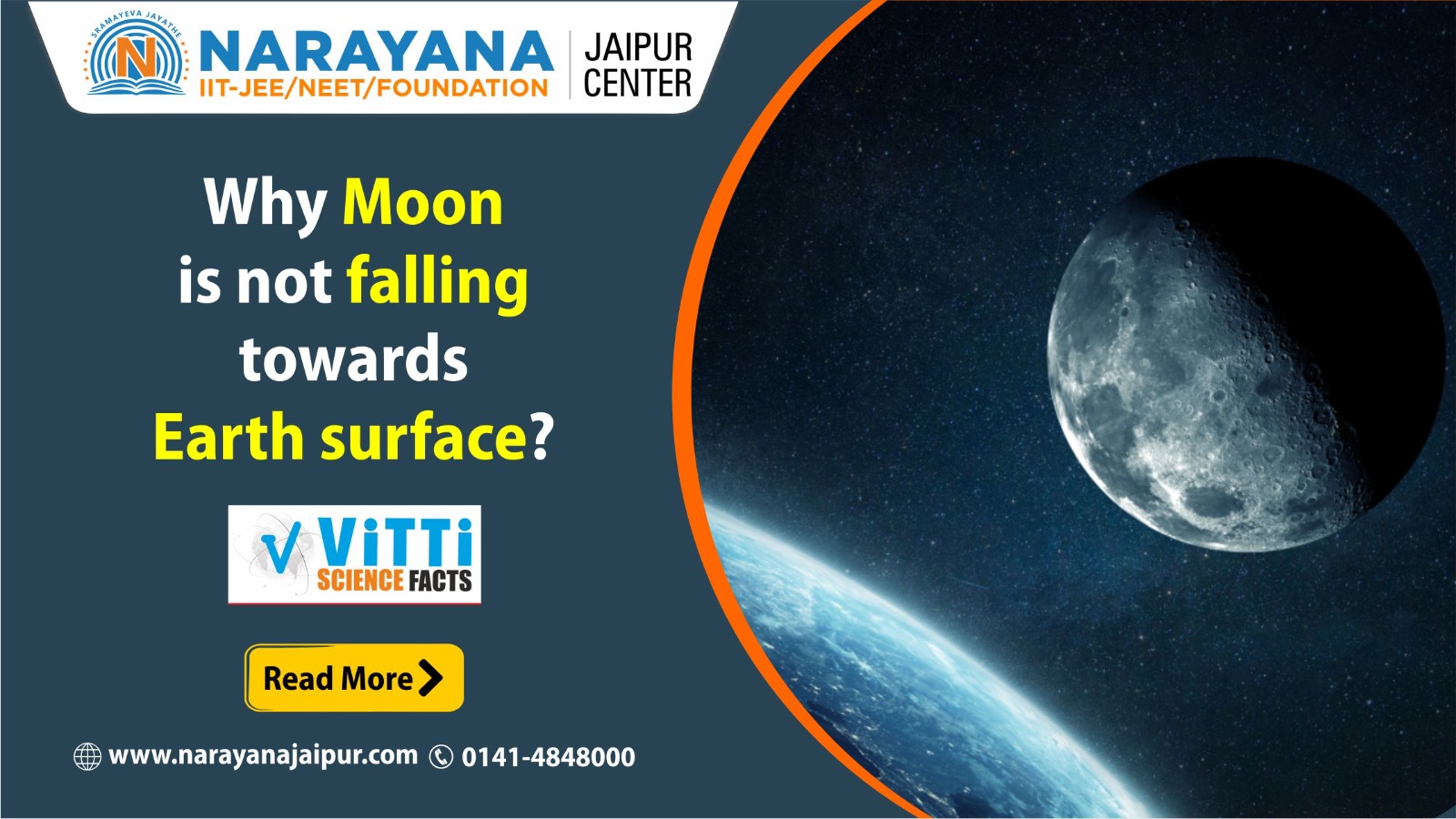The Cosmic Balance of Motion and Gravity
Have you ever looked at the Moon and thought, “Why doesn’t it fall down?” After all, gravity pulls everything toward Earth, right?
Surprisingly, the Moon is falling toward Earth—but it never actually hits us. That’s because it’s in a perfect state of continuous free fall, creating a beautiful balance between gravity and motion.
Watch this short video where we’ve explained the entire concept of the Moon’s orbit with simple visuals and real-life analogies. It’s the easiest way to truly understand why the Moon keeps circling us instead of falling down.
Gravity Is Always Pulling the Moon Toward Earth
Earth’s gravitational pull constantly tugs at the Moon, just like it does with everything else. This force is what keeps the Moon from flying off into space. Without gravity, the Moon would simply drift away in a straight line.
The Moon’s High Orbital Speed
Now here’s where it gets interesting.
The Moon moves sideways at an incredible speed—around 1 km/second, or about 3,600 km/h. Because of this speed, every time it falls toward Earth, it’s also moving forward fast enough that it keeps missing the surface. Instead of crashing, it keeps looping around us.
This is exactly what orbiting means: constantly falling but never hitting.
Analogy:
Imagine throwing a ball horizontally. If you throw it fast enough, its path curves downward with gravity, but it also moves forward. If it could go fast enough, and the Earth curved away beneath it, the ball would keep falling—but never land. That’s what the Moon is doing: falling around the Earth, not into it.
Two major forces work together to keep the Moon in orbit:
- Gravitational Force: Pulls the Moon inward, toward Earth.
- Centrifugal Force: Created by the Moon’s orbital motion, it acts outward—away from Earth.
These two forces are in perfect balance. Gravity wants to pull the Moon in, while the Moon’s forward speed (and the centrifugal force that comes with it) tries to fling it outward.
As long as this balance exists, the Moon remains in a stable orbit.
The Concept of Orbit: Falling Without Landing
The Moon’s orbit is like a curved racetrack. It’s always “falling” toward Earth under the influence of gravity, but because of its sideways speed, it keeps missing.
This continuous free-fall creates what we call orbital motion.
An Everyday Analogy: The Ball on a String
Think of swinging a ball on a string around your head.
- The string pulls the ball inward—like gravity.
- The ball’s motion tries to move it outward—like centrifugal force.
- If you cut the string, the ball would fly off in a straight line.
In the Moon’s case, there’s no string. Instead, it’s the invisible tug of gravity and the Moon’s speed that work together like magic to keep it circling Earth.
Bonus: What If the Moon Stopped Moving?
If, somehow, the Moon suddenly stopped moving sideways, gravity would take over completely—and it would fall straight down to Earth! Luckily, that’s not going to happen. The Moon has been in this cosmic dance for over 4.5 billion years.
Final Thought: A Celestial Ballet
The Moon isn’t defying gravity—it’s dancing with it. By constantly moving forward fast enough while falling toward Earth, the Moon remains suspended in a delicate, everlasting orbit.
It’s a beautiful reminder of how physics governs the universe—from falling apples to orbiting moons.
Name : Abhishek Agrawal
Department: Physics Foundation
Narayana Jaipur Center (NIHQ)


